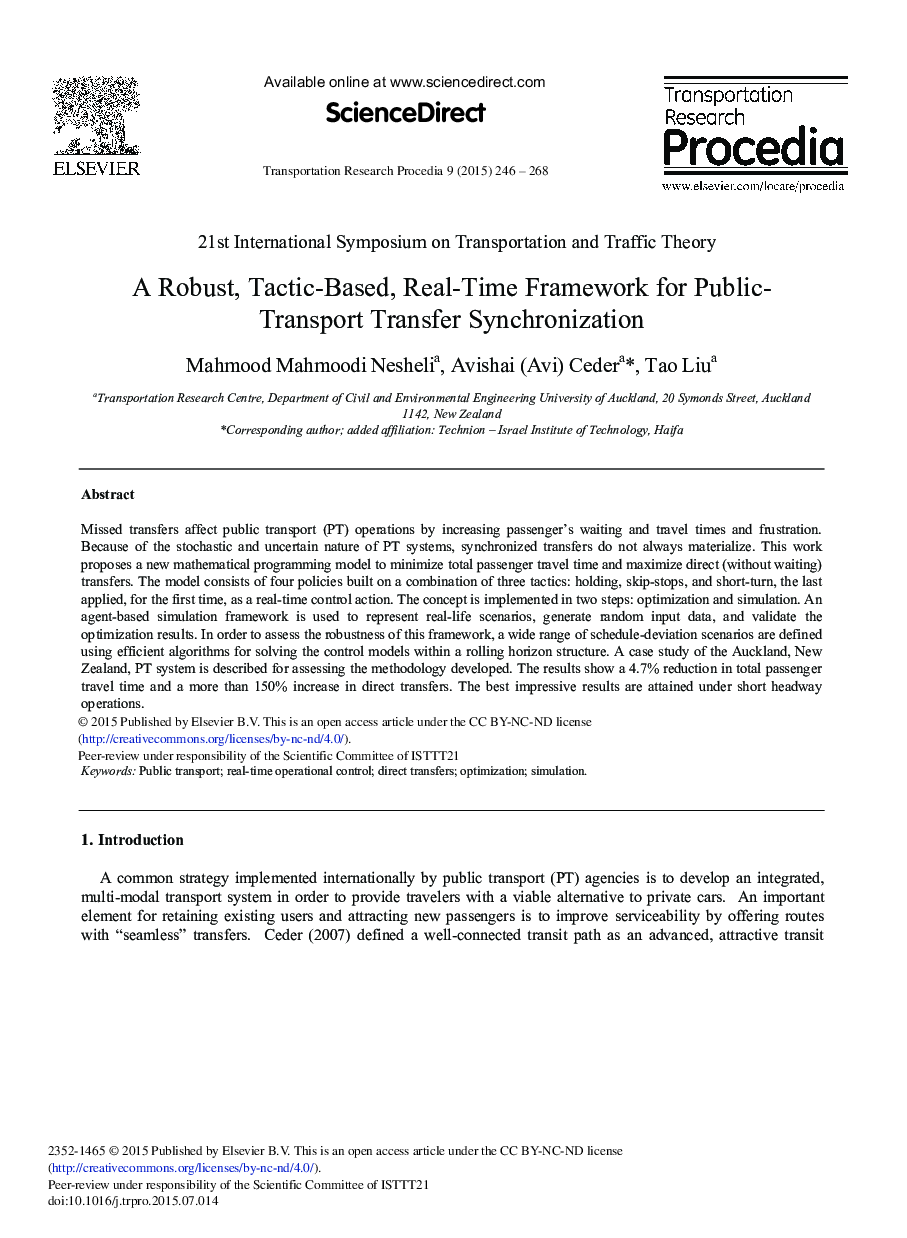| Article ID | Journal | Published Year | Pages | File Type |
|---|---|---|---|---|
| 1106368 | Transportation Research Procedia | 2015 | 23 Pages |
Missed transfers affect public transport (PT) operations by increasing passenger's waiting and travel times and frustration. Because of the stochastic and uncertain nature of PT systems, synchronized transfers do not always materialize. This work proposes a new mathematical programming model to minimize total passenger travel time and maximize direct (without waiting) transfers. The model consists of four policies built on a combination of three tactics: holding, skip-stops, and short-turn, the last applied, for the first time, as a real-time control action. The concept is implemented in two steps: optimization and simulation. An agent-based simulation framework is used to represent real-life scenarios, generate random input data, and validate the optimization results. In order to assess the robustness of this framework, a wide range of schedule-deviation scenarios are defined using efficient algorithms for solving the control models within a rolling horizon structure. A case study of the Auckland, New Zealand, PT system is described for assessing the methodology developed. The results show a 4.7% reduction in total passenger travel time and a more than 150% increase in direct transfers. The best impressive results are attained under short headway operations.
